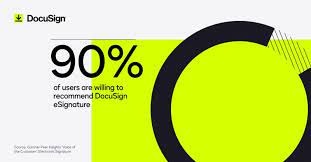In the ever-evolving landscape of electronic signature solutions, DocuSign has long been considered a pioneer and a dominant player. However, the market is witnessing a significant emergence of DocuSign challenger that are stepping up to provide compelling alternatives. In this article, we will explore this new wave of electronic signature solutions, each with its unique features and capabilities, challenging the status quo set by DocuSign.

The DocuSign Challenger Landscape
Several electronic signature solutions have emerged as strong contenders to challenge DocuSign's position. Here's a glimpse of a few notable ones:
1. Adobe Sign: Power and Integration
Adobe Sign, an offering from the software giant Adobe, is a formidable challenger. It brings the power of seamless integration with Adobe's ecosystem and robust security features. The deep integration with Adobe Acrobat and other Adobe tools make it a popular choice, especially for businesses already invested in the Adobe ecosystem.
2. HelloSign: Simplified and Streamlined
HelloSign stands out for its simplicity and ease of use. The user-friendly interface and straightforward signing process make it an attractive option for businesses seeking a simplified e-signature solution. It offers the necessary features for efficient document signing without unnecessary complexity.
3. SignNow: Mobility and Flexibility
SignNow distinguishes itself through its emphasis on mobile functionality and flexibility. The robust mobile app and a wide range of integrations make it a preferred choice, particularly for businesses requiring a mobile-friendly electronic signature solution. Its adaptability and real-time collaboration features set it apart.
4. PandaDoc: Comprehensive Document Management
PandaDoc is gaining traction for its comprehensive approach to document management. It combines document creation, e-signatures, and payments into one platform, streamlining the entire document lifecycle. The intuitive drag-and-drop editor and advanced analytics provide a holistic solution for businesses focused on sales, marketing, and proposals.
Conclusion
The rise of these DocuSign challengers is indicative of a market that is evolving and diversifying. Each alternative offers unique strengths, whether it's integration capabilities, simplicity, mobility, or comprehensive document management. As businesses seek electronic signature solutions that align with their specific needs and preferences, this new wave of alternatives provides a range of options to choose from.
In this dynamic landscape, businesses can now evaluate multiple solutions, considering factors such as ease of use, integration capabilities, pricing models, and industry applicability. This healthy competition among electronic signature providers ultimately benefits the end users, empowering them to make informed choices and find the best fit for their requirements. As the electronic signature market continues to evolve, we can expect further innovations and enhancements, enriching the options available to businesses and individuals alike.